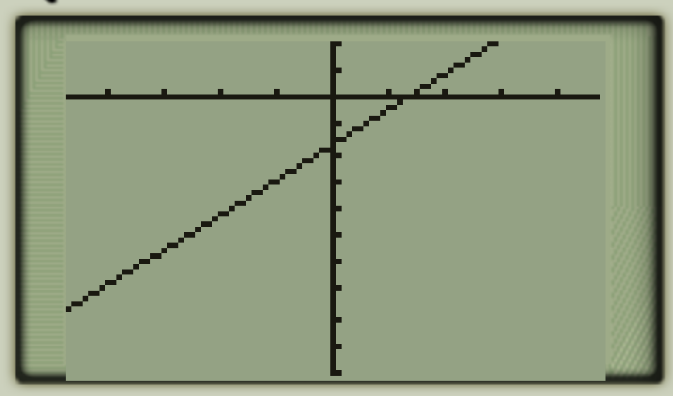Definition 1.2.1. Solution.
A solution of an equation is a value of the variable that makes the equation true.
| \(x\) | \(-2\) | \(-1\) | \(~0~\) | \(~1~\) | \(~2~\) | \(~3~\) | \(~4~\) |
| \(5-2x\) | \(\) | \(\) | \(\) | \(\) | \(\) | \(\) | \(\) |
| \(x\) | \(-12\) | \(-8\) | \(0\) | ||
| \(y\) | \(3\) | \(9\) |
| \(x\) | \(-12\) | \(-8\) | \(-4\) | \(0\) | \(4\) |
| \(y\) | \(-3\) | \(0\) | \(3\) | \(6\) | \(9\) |
| \(x\) | \(-12\) | \(-8\) | \(0\) | ||
| \(y\) | \(3\) | \(9\) |
| \(x\) | \(-12\) | \(-8\) | \(-4\) | \(0\) | \(4\) |
| \(y\) | \(-3\) | \(0\) | \(3\) | \(6\) | \(9\) |

| \(x\) | \(0\) | \(2\) | \(4\) | \(6\) | \(8\) | \(10\) | \(12\) |
| \(285-15x\) | \(285\) | \(255\) | \(225\) | \(195\) | \(165\) | \(135\) | \(105\) |


| Xmin\(=-5\) | Xmax\(=4.4\) | |
| Ymin\(=-20\) | Ymax\(=15\) |

| Xmin\(=-4.7 \qquad\) | Xmax\(=4.7 \qquad\) | Xscl\(=1 \qquad\) |
| Ymin\(=-250 \qquad\) | Ymax\(=50 \qquad\) | Yscl\(=25 \qquad\) |

| Xmin\(=-4.7 \qquad\) | Xmax\(=4.7 \qquad\) | Xscl\(=1 \qquad\) |
| Ymin\(=-250 \qquad\) | Ymax\(=50 \qquad\) | Yscl\(=25 \qquad\) |




| Xmin\(=-47 \qquad\) | Xmax\(=47 \qquad\) | Xscl\(=10 \qquad\) |
| Ymin\(=-31 \qquad\) | Ymax\(=31 \qquad\) | Yscl\(=10 \qquad\) |